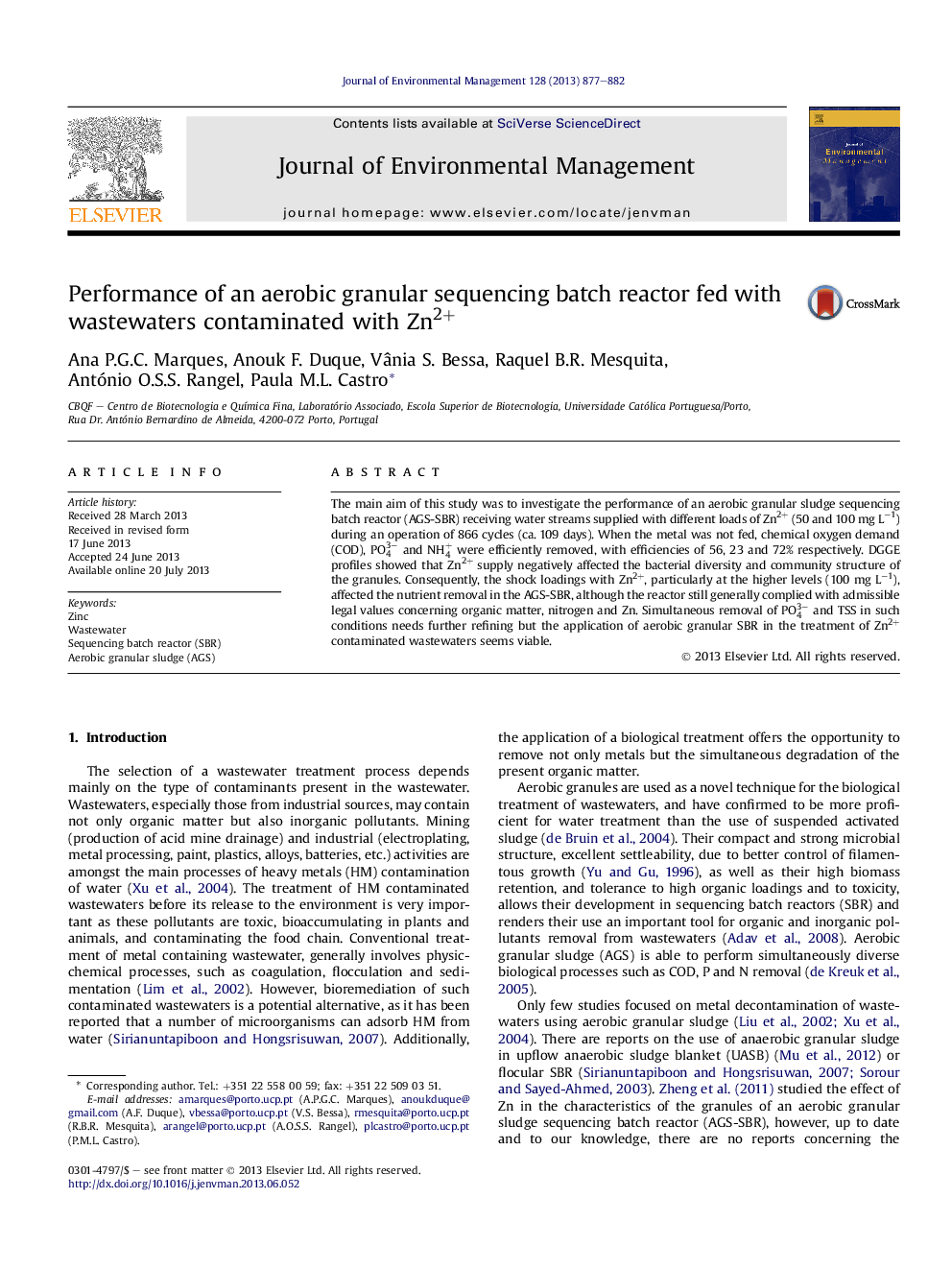| Article ID | Journal | Published Year | Pages | File Type |
|---|---|---|---|---|
| 7484610 | Journal of Environmental Management | 2013 | 6 Pages |
Abstract
The main aim of this study was to investigate the performance of an aerobic granular sludge sequencing batch reactor (AGS-SBR) receiving water streams supplied with different loads of Zn2+ (50 and 100 mg Lâ1) during an operation of 866 cycles (ca. 109 days). When the metal was not fed, chemical oxygen demand (COD), PO43â and NH4+ were efficiently removed, with efficiencies of 56, 23 and 72% respectively. DGGE profiles showed that Zn2+ supply negatively affected the bacterial diversity and community structure of the granules. Consequently, the shock loadings with Zn2+, particularly at the higher levels (100 mg Lâ1), affected the nutrient removal in the AGS-SBR, although the reactor still generally complied with admissible legal values concerning organic matter, nitrogen and Zn. Simultaneous removal of PO43â and TSS in such conditions needs further refining but the application of aerobic granular SBR in the treatment of Zn2+ contaminated wastewaters seems viable.
Related Topics
Physical Sciences and Engineering
Energy
Renewable Energy, Sustainability and the Environment
Authors
Ana P.G.C. Marques, Anouk F. Duque, Vânia S. Bessa, Raquel B.R. Mesquita, António O.S.S. Rangel, Paula M.L. Castro,
